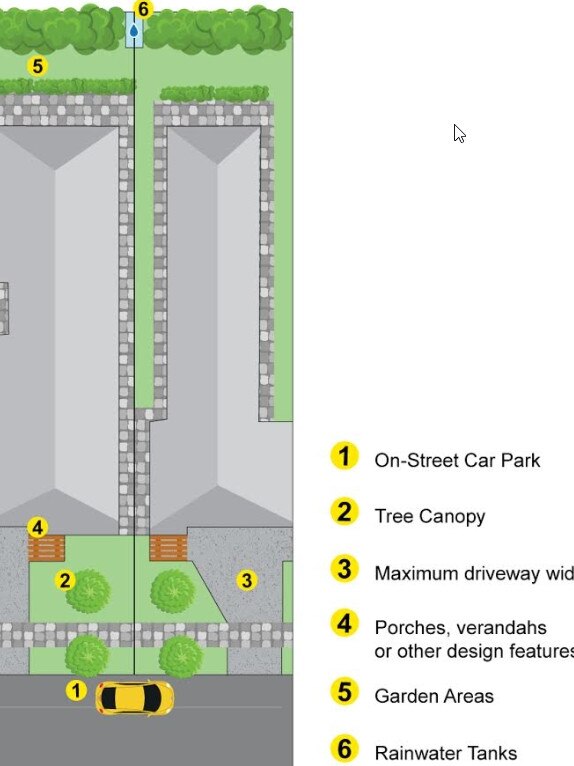Housing Industry Association SA says homeowners should not have to plant more trees
An ambition to plant more trees on new homes is facing expected backlash from the housing sector who say it will make new property unaffordable.
Local
Don't miss out on the headlines from Local. Followed categories will be added to My News.
A plan to force developers to plant at least one tree on housing blocks is a “feel good” exercise that will push more costs onto first-home buyers and do nothing to arrest the loss of urban vegetation, the state’s housing lobby says.
The State Planning Commission is proposing to reward developers with faster housing approvals if they meet mandatory minimum design standards, including planting more trees, under planning reforms out for public review.
But Housing Industry Association SA director Stephen Knight - whose body represents major volume home builders - said the policy would do nothing to increase canopy cover and push a problem onto those who can “least afford it and have least benefit”.
“It’s just a policy to make people feel good,” he said. “In its practical application it is going to solve nothing, it will just have a cost on housing affordability which we think is wrong.”

“This is a very contentious issue for the building industry due to the effect (and cumulative effect) of trees on buildings as a result of our reactive clays in most of Adelaide..
“What people are not considering is if you’ve got a very narrow block of land you have got very little space to put a tree, and a tree on your side also impacts the neighbour, so there is a cumulative effect.
“Our view clearly as industry is these trees should be in the public realm, footpaths, median strips and paths and you can’t force it on homeowners to fix green canopy issue in Adelaide.”
He said the industry was concerned planting trees close to new homes would require stronger foundations, raising building costs. Under the proposed planning and design code medium and high-rise developments would need deep soil root zones.
Mr Knight also questioned who would check that the trees are planted and whether owners would have to plant another tree if the first species dies.

In September the commission revealed it wanted to raise the bar on housing design by allowing councils to fastrack approvals for houses that met minimum benchmarks around increased landscaping, stormwater retention, garaging and parking requirements.
Commissioner Michael Lennon said at the time his office was particularly concerned about the loss of vegetation and tree canopy on private property.
He told a residents group meeting this month that a requirement for a deep root tree on a every development facing the street would cost an additional $4200 for stronger building footings.
“ … in my view that’s a cost worth bearing and that the protection and revegetation of our existing canopy is a high priority,” he said. “The cost of not vegetating metropolitan area would be demonstrably higher.”

The State Government wants to increase vegetation on public land by 20 per cent by 2045, requiring councils to plant of tens of thousands of trees each year to help cool neighbourhoods and counter so-called heat island effect.
But critics say existing tree laws are accelerating loss of trees on private land.
Mr Knight said developers already pay $7235 per subdivision into a State Government-administered open space fund and that money should be better directed to revegetating suburbs undergoing significant infill.
The Advertiser revealed last year that millions of dollars in subdivision levies were not being reinvested in suburbs undergoing significant urban regeneration.
